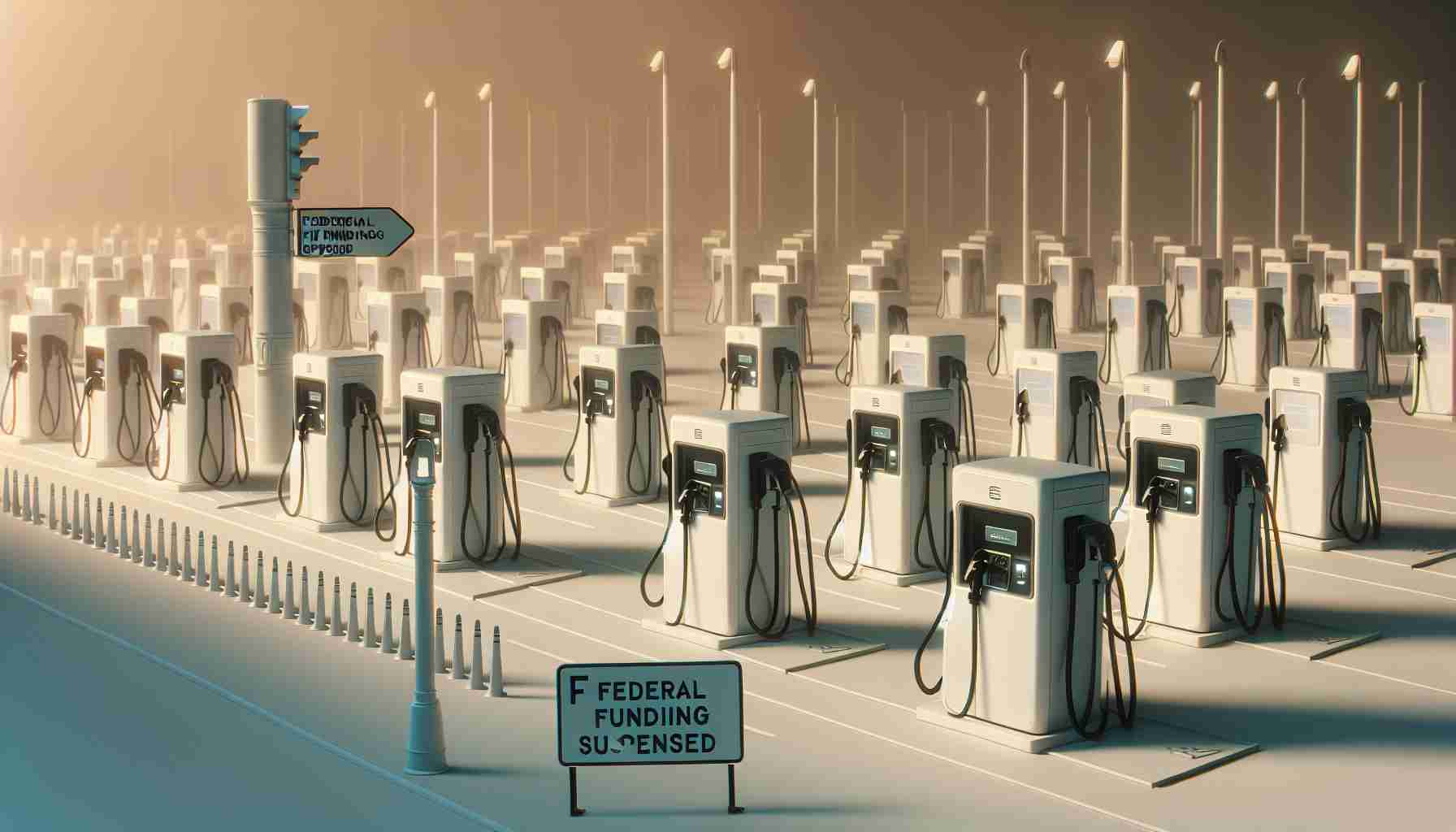- The U.S. Department of Transportation has paused funding for the National Electric Vehicle Infrastructure (NEVI) program.
- Originally funded by the Bipartisan Infrastructure Law, NEVI aimed to develop 500,000 EV charging stations with $5 billion allocated.
- States are awaiting approval for funding plans, which has caused uncertainty, particularly in North Carolina.
- North Carolina was expected to receive $109 million to build approximately 40 charging stations.
- Despite the funding pause, ongoing projects can still receive reimbursements allowing construction to proceed on some stations.
- The review by the agency may delay the growth of EV infrastructure and could impact the transition to electric vehicles.
In a surprising turn of events, the U.S. Department of Transportation has decided to pause funding for a crucial program aimed at expanding electric vehicle (EV) charging stations. Under the National Electric Vehicle Infrastructure (NEVI) program, established through the Bipartisan Infrastructure Law in 2021, approximately $5 billion was allocated to help states build a robust network of 500,000 charging facilities.
Now, with new leadership steering the agency, officials want to reassess the foundational policies of the NEVI program. This has left many states, including North Carolina, on edge, as they anticipate approval for funding plans already submitted. North Carolina, in particular, was set to receive up to $109 million to construct around 40 charging stations.
While the NEVI program requires plans to be vetted and approved by the Transportation Secretary, Sean Duffy, the pause in funding won’t halt progress entirely. Ongoing projects will still be eligible for reimbursement, allowing the North Carolina Department of Transportation to continue with the construction of nine stations, valued at $5.9 million.
These stations are poised to pop up in strategic locations, including a Firehouse Subs in Elizabeth City and a Love’s Travel Stop on Interstate 40 in Marion, ensuring that EV drivers across the state won’t face a charging drought just yet.
As the federal agency reviews its approach, the clear takeaway is that the future of EV infrastructure hangs in the balance, raising questions about the pace of the transition to electric vehicles. It’s a critical moment for sustainable travel—and your next road trip may just depend on it!
Why the NEVI Program Halt Could Impact Your EV Road Trips
The Pause on EV Charging Infrastructure Funding
In an unexpected twist, the U.S. Department of Transportation (DOT) has decided to pause funding for the National Electric Vehicle Infrastructure (NEVI) program. The NEVI program, part of the Bipartisan Infrastructure Law enacted in 2021, was designed to allocate around $5 billion to develop a nationwide network of 500,000 electric vehicle (EV) charging stations. This funding was integral for states like North Carolina, which had anticipated receiving $109 million to build around 40 new charging locations.
Despite this setback, there are some reassuring aspects for ongoing projects. Although new funding is on hold, previously submitted plans—such as the construction of nine charging stations by the North Carolina Department of Transportation, valued at $5.9 million—will still receive reimbursement. These stations are strategically located, including sites at a Firehouse Subs in Elizabeth City and a Love’s Travel Stop on Interstate 40 in Marion, helping to alleviate immediate concerns over charging access.
Current Trends and Innovations in EV Charging Infrastructure
As we move forward, it’s important to also consider the latest trends and innovations in EV charging infrastructure:
1. Fast Charging Technology: Advances in fast-charging technology mean that new stations can provide a full charge in as little as 20 minutes, reducing downtime for drivers.
2. Smart Charging Solutions: The integration of smart technology allows for dynamic pricing and load management, optimizing energy use and cost for consumers.
3. Portable Charging Units: Portable charging units are emerging as a practical solution for remote areas, ensuring EV drivers can access charging even in less populated regions.
Critical Questions Surrounding NEVI and EV Infrastructure
1. Why has the U.S. Department of Transportation paused NEVI funding?
– The new leadership within the DOT is looking to reassess foundational policies of the NEVI program. This decision aims to better align future investments with changing electric vehicle market needs and state requirements.
2. What are the potential impacts of this funding pause on EV adoption?
– The halt could slow the development of essential charging infrastructure, potentially leading to concerns about charging accessibility for EV drivers and affecting the overall pace of EV adoption.
3. Will ongoing projects be affected by this funding pause?
– Ongoing projects will not be halted; they remain eligible for reimbursement. This ensures that some level of development will continue, particularly for already planned charging stations.
Market Insights and Future Predictions
As we navigate through this transitional stage for EV infrastructure, a few insights and predictions emerge:
– Continued Demand: The push toward sustainable transportation is likely to maintain high demand for EVs, ensuring that the need for charging facilities remains significant.
– State-Level Initiatives: States may increasingly explore their funding avenues and partnerships with private companies to secure charging infrastructure independently of federal funding.
– Public-Private Partnerships: Collaboration between government entities and private firms is expected to grow, aiming to leverage additional resources and expertise in expanding EV infrastructure.
For more information on electric vehicles and infrastructure development, visit energy.gov.



















